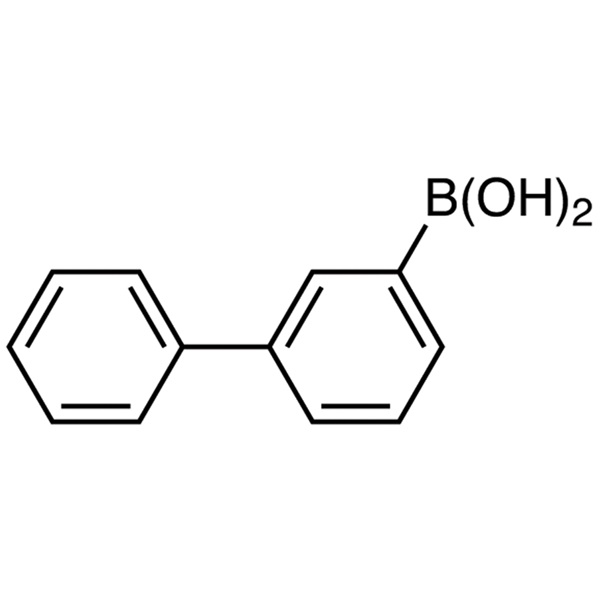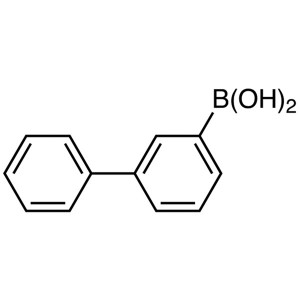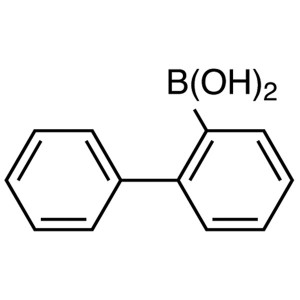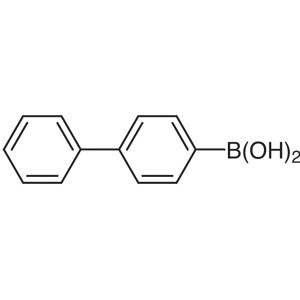3-Biphenylboronic Acid CAS 5122-95-2 Purity >99.5% (HPLC) Factory Hot Sale
Manufacturer Supply With High Quality, Commercial Production
Chemical Name: 3-Biphenylboronic Acid CAS: 5122-95-2
| Chemical Name | 3-Biphenylboronic Acid |
| Synonyms | Biphenyl-3-Boronic Acid; [1,1'-Biphenyl]-3-Ylboronic Acid |
| CAS Number | 5122-95-2 |
| CAT Number | RF-PI1375 |
| Stock Status | In Stock, Production Scale Up to Tons |
| Molecular Formula | C12H11BO2 |
| Molecular Weight | 198.03 |
| Melting Point | 193.0~198.0℃ (lit.) |
| Solubility | Soluble in Methanol; Insoluble in Water |
| Brand | Ruifu Chemical |
| Item | Specifications |
| Appearance | White to Light Yellow to Light Orange Powder |
| Purity / Analysis Method | >99.5% (HPLC) |
| Loss on Drying | <0.50% |
| Residue on Ignition | <0.20% |
| Single Impurity | <0.50% |
| Total Impurities | <0.50% |
| Heavy Metals (as Pb) | <20ppm |
| Test Standard | Enterprise Standard |
| Usage | Pharmaceutical Intermediates; OLED intermediates |
Package: Bottle, Aluminium foil bag, 25kg/Cardboard Drum, or according to customer's requirement.
Storage Condition: Store in sealed containers at cool and dry place; Protect from light and moisture.


3-Biphenylboronic Acid (CAS: 5122-95-2) is used as reactant involved in Suzuki-Miyaura Cross Coupling Reaction. 3-Biphenylboronic Acid is used as organic synthesis intermediates, pharmaceutical intermediates and OLED intermediates, liquid crystal intermediates or display materials. 3-Biphenylboronic Acid is a fluorescent boronic acid useful for sensitive detection of sugars in water. It is a biological reagent used as a boronate-assisted fluorogenic chemosensor. It is evaluated for pharmacological activity as fatty acid amide hydrolase inhibitors. It is a reactant involved in coupling with potassium cyanate, quinones, or fluorous tagged N-hydroxyphthalimide and direct C-H arylation of electron-deficient heterocycles.




